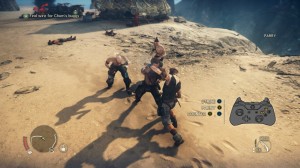My recent post on short and long-term progression got a mention on the Game Developers Radio podcast and they discussed the topic of progression further. During the cast, they made a good point about using mechanics or gameplay as a form of progression and that gives us another discussion on game design to talk about.
Using mechanics as a form of progression is something that we see more in skill-based titles compared to abstracted ones; the reason is that the player can easily see the impact of the new mechanic or ability when they’re the ones actually using it. In my previous post on short and long-term gameplay, we talked about the motivation and pull of short-term progression compared to long-term, but that post was focused more on abstracted measures such as leveling up, loot etc.
If you’re planning on using new mechanics and systems as a form of progression, it requires a different way of implementation and pacing, because you’re actually changing the game as time goes on. With that said, there are two popular philosophies when trying to use mechanics as a form of progression: Side-quests and a “campaign setting.” We’re going to start with side-quests, as they have become a very popular option in recent years.
Taking the Long way around:
The open world genre has become very popular as the technology needed to create and fill these worlds with content has grown over the last decade; games like Just Cause 2, Mad Max, Shadows of Mordor, Batman, Assassin’s Creed and recent Farcry games are just some of the examples.
Each one of these games has a literal end to them: The final quest, big boss fight etc, that the player can follow the story or main missions and see in short order. In most cases, if the player just goes straight through the main story, they’re going to be unprepared and have a harder time. Instead, the game is built around providing the player with “optional” means of improving themselves.

Numerous upgrades and optional content are littered throughout Mad Max and can make the game a lot easier by going after them.
I put optional in quotes because being able to make your character all around better is not viewed as optional content, despite how it’s implemented.
Depending on the game, side-quests can either directly give the player new upgrades or abilities, or simply provide the player with experience points that can be used to further unlock new abilities.
Some games hit the player over the head with side quests spread all throughout the landscape like Just Cause 2 and Mad Max; tempting the player to go off the beaten path at every chance. Other games may introduce more side challenges as the game goes on, or simply gate side quests depending on where the player is at and their current skill-set.
In Farcry 3 for instance, there were a variety of side quests that could boost the player’s abilities, but you could only go so far up their respective tracks in the starting areas; for more power, you had to venture outward.
The side quest system does a great job at growing the world and giving players something to do outside of the main quest, but it’s not without its challenges.
Optionally Required:
The problems with the side quest system come down to balance with the main game. Most open world games built around side quest progression don’t seem to be balanced properly with the main game. Titles like Farcry 3 and Shadows of Mordor start the player off in a very weaken state; making them barely able to fight anything beyond the simple grunts. Through the side quest system and leveling up, the player becomes Death incarnate; turning the game into a breeze.

The problem with optional content is that it’s hard to balance the game around where you think the player is power-wise
The problem is that the balance of the game is never right; either the player will be weak, or they’ll be so strong that the main game becomes a chore to play through.
What’s worse is if the designers lock important abstracted powers behind the leveling or optional system. Some examples would be letting the player counterattack enemies, instant kill skills, regenerate health and so on.
Figuring out the balance of your main game is tough: Do you balance with the intention of the player doing side quests or not? If you decide the former, then the side quests become required; if you do the latter, then they’re not meaningful to the experience.
One suggestion I think would help out the balance would be to borrow a page from JRPG design. Many JRPGs balance the main content of the game around the player not having to hit all the side quests, but then feature optional content beyond the scope of the main game. These optional quests are always harder than the main game and even the final boss; testing the player’s skill and stats to provide an adequate challenge.
Another problem with side quest progression is hitting the player with too much at once. While it’s great to give the player plenty of things to do, but if you overload them at the start, then it becomes confusing and the player is unsure what to do. Shadows of Mordor had this problem in my opinion. From the word, “Go,” the map was littered with events, quests, points of interest, warlords etc. There were so many things to focus on at one time, that it became difficult to know where to go first and whether or not I was ready for these challenges.
This is where gating content becomes useful in order to make sure that the player has an idea of what they should be focusing on. In Crackdown, while the world was open from the start, the player was still locked to one island at a time. Or in Batman Arkham City’s case, have new cases and optional challenges unlock in relation to the progress on the main quest.
Speaking of the main quest, games that use the campaign structure of the title for gameplay progression is the other option; while it is simpler to implement, it still requires a careful hand in terms of balance.
Growing in Power:
A campaign structure to gameplay progression simply means that the player will unlock new abilities or moves naturally as the game goes on; growing in power and changing how the game is played. Obviously, Metroidvania-styled games are a great example of this as well as Zelda, but we can also use titles like the Batman Arkham series with required upgrades and even multiplayer progression models such as in Call of Duty.

Games that have their upgrades as a direct part of the gameplay are free to make them as game changing as they want, because every player is going to get them
The key point is that progression of this kind occurs through playing the game and is not optional; whereas the side quest system lets the player decide what they will and won’t go after.
The big advantage from the design side is that the developer knows exactly the power level and set of skills the player has access to at any given point; allowing them to better balance and fine-tune the experience around it.
Because these upgrades are required and every player is going to get them, you can come up with powerful and game changing upgrades that anyone who plays the game is going to see and use. This also feeds into the level design; giving the designer options on how to expand and grow the game with new mechanics and situations to make use of the new upgrades.
Since these upgrades are going to be hardcoded into the game’s structure, it’s harder to mess them up compared to side-quest progression, but there are a few points we can talk about.
Stunted Growth:
Campaign progression is a big deal and you as the designer need to keep the player engaged; every upgrade has to change the game and make sure that the player is invested in continuing to play. While side quest systems let you get away with upgrades like, “Plus five fire damage,” campaign progression means that the game needs to change with their appearance.
Similar to a post I made awhile ago on hard choices in storytelling, every campaign progression upgrade creates a permutation in the design; requiring the designer to alter the game from that point on. A big problem found in lesser Metroidvania-styled games is where upgrades are simply used as keys to unlock new areas; not changing how the game works.

Upgrades introduced through the game should change how the game plays from that point on, not act as keys to get around certain obstacles
Poor campaign-styled progression is also when the mechanic has such a limited use that the player will hardly ever use it, such as an item that only works at select points on the map and nowhere else.
There is also such a thing as too much campaign progression; where the player is given so many tools that it becomes a burden to go through them all and the levels aren’t able to be built around all of them at once.
One way to get around that is to structure a level in terms of sections, with each section making use of different items or abilities and go through the entire pool that way; see the final dungeons in the Zelda series as an example.
The basic tip in terms of campaign progression is to figure out the extent of which you want to introduce new mechanics and progression over the course of the game, and then lock that foundation and balance your game around it. Be careful about coming up with new mechanics late into development, when it may be too late to go back to properly balance the game and integrate into the remaining sections.
Creating the Tools:
Gameplay progression has been a big part of modern game design and allowing the designer to grow and change the game as time goes on. Taking this back to the post on short and long-term progression, it’s important to properly pace out the introduction of new mechanics. New mechanics should be introduced at a quick enough pace so that the player doesn’t get bored with the game, but not so fast that they didn’t have time to learn the previous mechanic.
I think we’ve covered all the major points of game progression at this point, but if I missed anything, leave a comment and I can start thinking about a part 3 for these posts.


